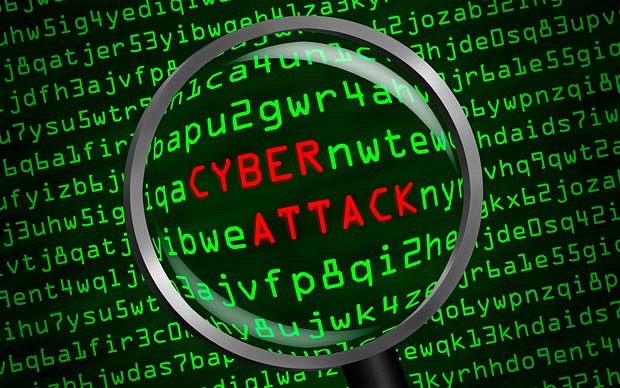Bit9+Carbon Black and FL based Sylint Group partner to provide global cybersecurity services
WALTHAM, Mass.— Bit9, the leader in advanced threat protection for endpoints and servers, today announced the Bit9 Connect Alliance Partner Program. The program integrates the leading endpoint and server security solution from Bit9 + Carbon Black with top network security, analytics and SIEM, threat intelligence and security service provider solutions so organizations can choose best-of-breed solutions from different vendors to create a unified defense against cyber threats.
Companies participating in the program represent the best of the best in their respective segments of security. The end result is enterprises that deploy the Bit9 Security Platform with any or all of the alliance partners’ offerings will strengthen their security posture, decrease their total costs of ownership, achieve faster deployment times, and gain increased value from their integrated solutions. Participating vendors’ solutions are certified to fully integrate with the Bit9 platform.
The new program, which is being introduced a week following Bit9’s merger with Carbon Black, covers the complete security ecosystem, including:
- Network Security–Bit9 and Carbon Black partner with vendors in the network security space to enable customers to correlate their network data with their endpoint and server data. As network security solutions detect malware on the network, Bit9 and Carbon Black consume the network alerts and automatically determine where the malware landed, if it executed, and how many machines were affected. This instant visibility enables security analysts to filter out non-actionable events, prioritize high-impact alerts, and rapidly respond to security incidents. Likewise, when Bit9 detects unknown or suspicious executable files on endpoints and servers, it can send the file to a detonation engine for analysis. If a risk analysis determines that the file is malicious, Bit9 can automatically ban it from spreading to other endpoints or servers within a customer’s environment. Certified network security solutions include Check Point Next Generation Firewall, General Dynamics Fidelis Cybersecurity Solutions, FireEye EX, FireEye NX, and Palo Alto Networks Next-Generation Firewall.
- Analytics and SIEM—Bit9 works with vendors in the data analytics and security information and event management (SIEM) space to enable customers to view all of their security information from one centralized data repository. Bit9 offers standards-based and proprietary integrations with leaders in this space so security analysts can view endpoint and server events alongside other security information. Certified analytics and SIEM solutions in the program include HP ArcSight, IBM QRadar, LogRhythm, and RSA NetWitness.
- Threat Intelligence—Bit9 partners with threat intelligence vendors to bolster the power of the Bit9 Software Reputation Service (SRS). The Bit9 SRS is a cloud-based intelligence database that provides insight into known-good, known-bad and unproven software, giving IT and security teams actionable intelligence about the software installed within their enterprise. Our threat intelligence partners provide valuable feeds so Bit9 can provide customers with the most accurate and up-to-date software reputation data. Bit9’s threat intelligence partners include OPSWAT and Team Cymru. Bit9 will announce additional threat intelligence partners later this quarter.
- Security Service Providers—Bit9 partners with managed security service providers (MSSP) to fully empower security analysts to detect, respond and remediate advanced threats that target their customers. Bit9 also works closely with incident response (IR) consulting firms to help clients gain immediate access to the Bit9 + Carbon Black solution to aid in remediation efforts. As IR teams identify the malicious files used to execute an attack, Bit9 can identify each endpoint and server on which the malware has landed. This immediate visibility enables IR teams to rapidly contain attacks and accelerate remediation. Certified security service provider partners in the Bit9 Connect program include Accuvant, FishNet Security and Sylint.
Bit9 Executive Quote: Tom Barsi, vice president of business development
“Legacy security systems do not solve the problem for today’s advanced threats. Customers are defending themselves against advanced threats with a completely new approach across their security stack. I’m excited to announce that today, Bit9 is taking a step forward to create a holistic ecosystem of security partners that helps close the security gap and provides a 360-degree view of advanced threat security.”
Palo Alto Networks Executive Quote: Scott Gainey, vice president of marketing and programs
“Bit9 is setting the pace for Endpoint Threat Detection, Response and Prevention solutions. Since our partnership began in 2013, we have been consistently impressed with Bit9’s execution, and our customers have demonstrated strong interest in our integrated network and endpoint security offerings. The Bit9 Connect Program will only deliver further value as customers continue to build out next-generation security infrastructures.”
IBM QRadar Executive Quote: Jason Corbin, director of security intelligence strategy and product management
“With today’s increasingly complex threats, more network context helps security teams detect attacks and remediate breaches faster. The Bit9 Security Platform provides the QRadar Security Intelligence solution with in-depth visibility around endpoint security. Our joint solution identifies where files originate, any propagation to other machines, and whether they’re executable, malicious or involved in a current attack. We’re excited about Bit9 adding more intelligence and visibility around security threats such as malware and zero-day attacks to QRadar’s leading analytical capabilities.”
Sylint Executive Quote: Serge Jorgensen, chief technology officer
“The Bit9 team and product suite bring a strong new set of capabilities to any incident response toolkit. Bit9’s technology consistently increases the accuracy, speed and efficiency of our incident response process by precisely identifying key files and machines and allowing a more effective triage and mitigation.”
About Sylint
Formed in 1998, our firm has developed a national reputation as a leader in its field. We serve clients from Fortune 50 to small firms and municipalities. Our professionals combine experience from National Intelligence Agencies, Department of Defense, law enforcement, and corporate entities Sylint provides comprehensive cyber security and investigative services to keep our clients secure in a cost efficient manner. Our services include detection and remediation of corporate espionage, fraud identification, cyber security posture review, and regulatory compliance.
About Bit9 + Carbon Black
Bit9 and Carbon Black have joined together to offer the industry’s most complete solution for advanced threat protection for endpoints and servers. The merged company helps organizations protect themselves from advanced threats in two critical ways: by reducing their attack surface through new signature-less forms of prevention, and rapidly detecting and responding to threats. We do this by leveraging the powerful combination of Carbon Black’s lightweight endpoint sensor, which can be rapidly deployed with no configuration to deliver “incident response in seconds,” and Bit9’s industry-leading prevention technologies to continuously monitor and record all activity on endpoints and servers and stop cyber threats that evade traditional security defenses. Our lightweight real-time sensor and recorder, cloud-based services, and real-time enforcement engine give organizations immediate visibility into everything running on their endpoints and servers; real-time signature-less detection of and protection against advanced threats; a recorded history of all endpoint and server activity to rapidly respond to alerts and incidents; and real-time integration with network security devices such as Check Point, FireEye and Palo Alto Networks. 1,000 organizations worldwide—from 25 Fortune 100 companies to small businesses—use Bit9 and Carbon Black to increase security, reduce operational costs and improve compliance.








